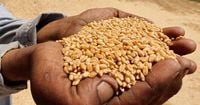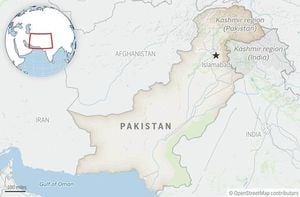The world’s food markets have entered a period of striking stability, at least on the surface, according to the latest data released by the United Nations Food and Agriculture Organization (FAO). In August 2025, the FAO Food Price Index (FFPI)—the global benchmark for food prices—averaged 130.1 points, barely budging from July’s figure of 130.0 points. But beneath this steady headline number, a complex dance of rising and falling commodity prices is shaping the food landscape, with significant implications for producers, consumers, and policymakers worldwide.
According to Reuters, the August reading marks the highest level for the index since February 2023, standing 6.9 percent higher than the same month last year. However, it remains 18.8 percent below the dramatic peak reached in March 2022, a surge that followed Russia’s invasion of Ukraine and sent shockwaves through global food supply chains.
So, what’s keeping prices steady despite all the turbulence? The answer lies in the push-and-pull between various food categories. In August, higher global prices for meat, sugar, and vegetable oils neatly offset declines in cereals and dairy products. The result: a plateau in the overall index, but plenty of movement beneath the surface.
Let’s start with cereals, the backbone of diets and food security worldwide. The FAO Cereal Price Index slipped by 0.8 percent to 105.6 points in August, continuing a five-month downward trend. As reported by Rural Voice, wheat prices dropped thanks to ample global supplies and subdued import demand, especially after large harvests in the European Union and Russia. Meanwhile, maize (corn) bucked the trend, rising for the third straight month. What’s fueling this? Concerns over heatwaves in the EU and increased demand for animal feed and ethanol production in the United States. Reuters adds that maize output forecasts have been revised upward in the U.S., Brazil, and Mexico, driven by record yields and expanded planting. Conversely, European cereal production is expected to fall due to dry weather and reduced yields.
Rice prices, another key staple, fell by 2 percent in August. The drop was propelled by intense competition among exporters and, notably, a fall in Indian rice prices to three-year lows. Reuters attributes this to rupee weakness, which has made Indian rice more competitive on the world market.
On the oil front, the story was quite different. The Vegetable Oil Price Index jumped 1.4 percent to 169.1 points, its highest since July 2022, according to both Rural Voice and Reuters. Palm oil prices led the charge, climbing for the third consecutive month. The main driver? Robust global demand and Indonesia’s imminent move to ramp up the mandatory palm oil content in its biodiesel—a policy aimed at reducing reliance on imported fossil fuels. Sunflower and rapeseed oils also saw gains, thanks to tighter supplies in the Black Sea region and Europe, while soyoil prices edged down on expectations of ample supply.
Meat prices, meanwhile, hit a record high. The FAO Meat Price Index rose 0.6 percent to 128.0 points in August, up 4.9 percent from a year earlier. Reuters reports that strong demand for beef in the United States and China lifted bovine meat prices to new peaks. Chinese demand, in particular, kept Brazilian beef exports robust, even in the face of U.S. tariffs. Ovine (sheep) meat prices rose for the fifth consecutive month, driven by tight supplies in Oceania. Pig meat prices held steady, while poultry prices dipped, weighed down by abundant Brazilian exports and lingering import restrictions, despite clearance from avian influenza concerns.
Dairy products offered little respite for consumers hoping for price relief. The Dairy Price Index fell 1.3 percent to 152.6 points, marking a second straight monthly decline. Still, it remains 16.2 percent higher than a year ago. Prices for butter, cheese, and whole milk powder all eased, thanks to strong production in New Zealand and the European Union and subdued demand from Asian markets. Skim milk powder, however, bucked the trend, with prices rising on tight supplies from New Zealand.
Sugar prices also nudged higher, ending a five-month slide. The FAO Sugar Price Index edged up 0.2 percent to 103.6 points in August. Concerns over reduced sugarcane yields in Brazil—the world’s largest producer—and stronger import demand, especially from China, pushed prices up. However, the gains were limited by expectations of larger harvests in India and Thailand, as noted by both Rural Voice and Reuters.
Behind these shifting price patterns lies a broader story of resilience and adaptation in global agriculture. The FAO, in a separate report cited by Reuters, forecasts record global cereal production in 2025—2.961 billion tonnes, up from 2.925 billion previously. This would mark a 3.5 percent increase over last year, driven primarily by improved maize prospects. Expanded planted areas and record yields in the U.S., Brazil, and Mexico are expected to offset weather-related declines in the European Union.
But even with record harvests on the horizon, the interplay of supply, demand, and policy remains delicate. Indonesia’s push to boost biodiesel production, for instance, has significant ripple effects on palm oil markets and, by extension, on food and energy security. Meanwhile, shifting weather patterns, such as heatwaves in Europe and droughts elsewhere, continue to inject uncertainty into crop forecasts and price trajectories.
For consumers, the impact of these changes can be hard to predict. While some food categories are seeing price relief, others—especially meat and vegetable oils—are becoming more expensive. For producers, the story is equally mixed: some benefit from strong demand and high prices, while others face pressure from oversupply or shifting trade dynamics.
The FAO Food Price Index, then, is more than just a number. It’s a window into the complex, interconnected forces that shape what ends up on dinner tables around the world. As August’s data show, even periods of apparent stability can mask significant undercurrents—underscoring the need for vigilance, adaptability, and, perhaps, a bit of luck in the months ahead.
With global food prices hovering near multi-year highs and the balance between supply and demand as fragile as ever, all eyes will remain fixed on the next moves in international markets, weather patterns, and government policies. The world’s food system, it seems, is never far from its next turning point.




